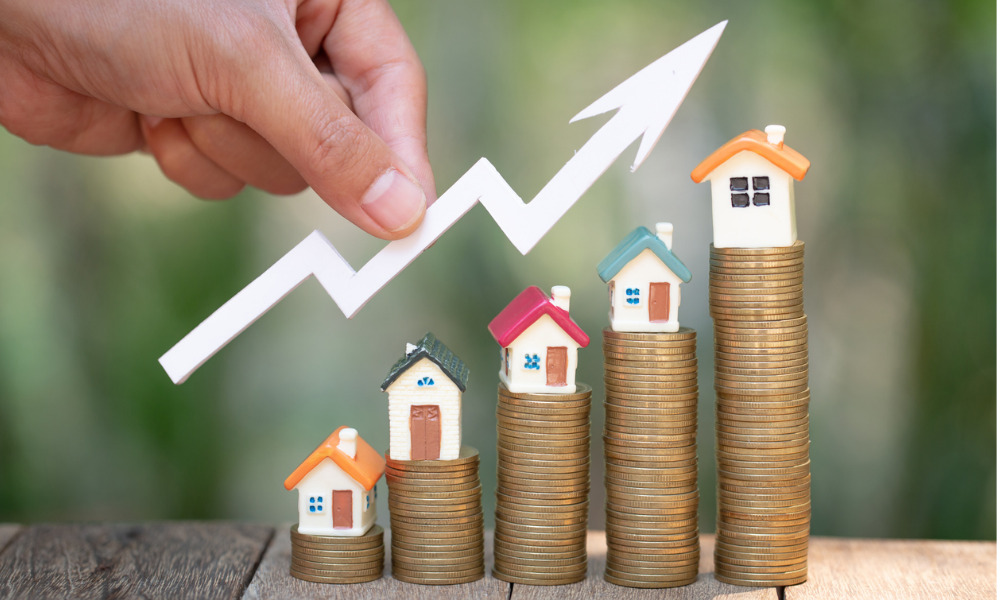Rent also increases in the past 12 months

The average house price in the UK increased by 10.9% in February 2022 compared to last year’s figures.
The latest UK House Price Index, released today by the Office for National Statistics (ONS), shows that the average UK house price was £277,000 in February 2022, which is £27,000 higher than this time last year.
The 10.9% jump is also higher than the 0.2% rise in January.
Average house prices increased by 10.7% over the year in England to £296,000, in Wales by 14.2% to £205,000, in Scotland by 11.7% to £181,000, and in Northern Ireland by 7.9% to £159,000. ONS said London continues to be the region with the lowest annual growth at 8.1%.
Meanwhile, private rental prices paid by tenants in the UK rose by 2.4% in the 12 months to March 2022, up slightly from 2.3% in the 12 months to February 2022.
Private rental prices grew by 2.2% in England, 1.6% in Wales, and 2.8% in Scotland in the 12 months to March 2022. The East Midlands saw the highest annual growth in private rental prices at 3.8%, while London recorded the lowest at 0.4%.
The Royal Institution of Chartered Surveyors’ February 2022 UK Residential Market Survey reported that home sales strengthened in February along with a pick-up in new buyer enquiries, despite the Bank of England’s decision to increase interest rates.
The Bank of England’s own summary of business conditions 2022 Q1 report revealed that demand in the housing market has remained strong.
“Rising interest rates and growing financial pressures have done little to dampen demand for property as average UK house prices continued a strong upward trajectory,” said Paul McGerrigan, chief executive at fintech brokerage Loan.co.uk.
Read more: “UK housing will not be shaken by rates rising from historic low”.
“We expect this trend to continue in the coming months, despite the economic stranglehold of soaring energy costs, rising interest rates and sharp spikes in the cost of goods, as there is still a considerable shortage of supply and demand for more space and higher quality of life will remain a priority to those who can afford it.”
Nathan Emerson, chief executive at Propertymark, noted that the level of housing supply is 32% lower than before the pandemic, while demand is up 134%.
“These latest ONS figures suggest that the market continues to remain extremely competitive, but the cost-of-living crisis may be a key contributor preventing home buyers and sellers coming on to the market due to financial uncertainty,” Emerson said.
He also pointed out that slight growth in the number of properties coming to the market will help close the gap of supply and demand, and will enable house prices to start to stabilise.
McGerrigan cited two factors that could dampen the strong upward trend of house prices.
“One, if the Bank of England’s Monetary Policy Committee continues to increase rates over the coming months. Two, if the new trend of tightening affordability tests on mortgages increases across all of the UK banks,” he said.
Sundeep Patel, director of sales at specialist lender Together, said ongoing economic uncertainty will directly impact people’s ability to spend on property.
“Over the next few months, we might expect activity to cool as most homeowners opt to stay put and use any available money to meet surging household bills this summer,” he added.
Chris Hutchinson, chief executive at rental platform Canopy, agreed that many potential homebuyers would be putting off their plans to buy a home amid fears of not being able to raise the necessary funds or of keeping up with repayments.



